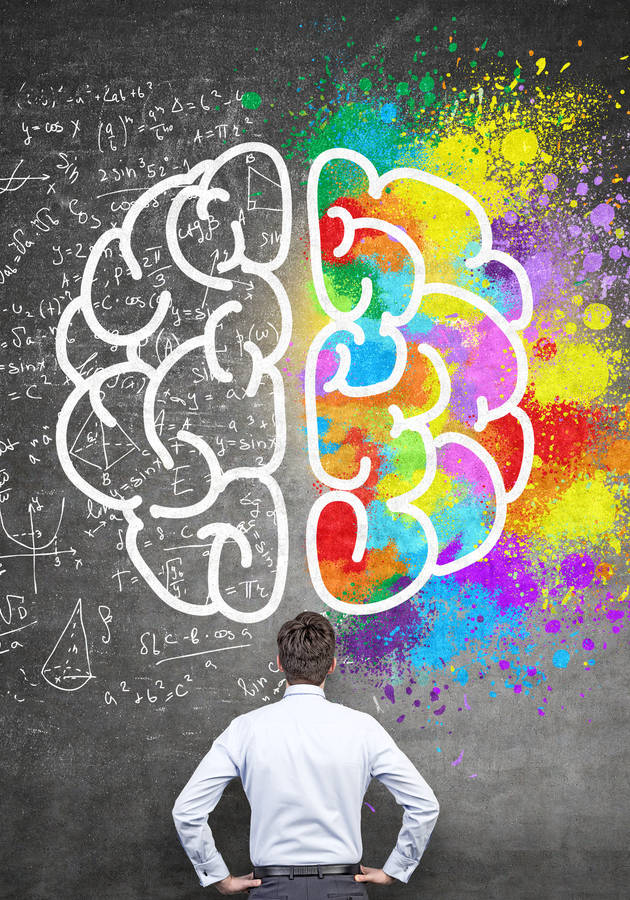There aren’t many subjects that preoccupy us as much as the subject of sex. Simultaneously the source of our most intense pleasures and the cause of some of our most profound miseries, it has been explored by countless artists through several mediums and in numerous forms – ever since the dawn of humanity. And ever since the end of the nineteenth century and the pioneering work of Havelock Ellis and Sigmund Freud, it has come to be the focus of close scientific study by everyone from biologists and psychologists to sociologists and criminologists.
Sex is, unsurprisingly, the main subject of Why Is Sex Fun?, a short 1997 book by Jared Mason Diamond, one of the last living members of that just about extinct Renaissance species: the polymath. The book, to quote the author, is “a speculative account of how human sexuality came to be the way it now is,” aiming to “help you understand why your body feels the way it does, and why your beloved is behaving the way he or she is.” Though much shorter, our summary shares the same objective. So get ready to learn all about sex!
The animal with the weirdest sex life
Say that your dog could speak, and say that you could ask it what it thought of your sex life. Its response – at least according to Jared Diamond – would probably sound something like this:
“You humans are disgusting! For one, you have sex any day of the month – even when the females know perfectly well they aren’t fertile, like, say, after their periods. The males, on the other hand, don’t even care whether their energy-draining efforts could result in a baby or not: they sometimes have sex with their partners while they are pregnant or even after they’ve gone through something they call menopause and can’t even have children anymore! As if that is not enough, humans hide from others when they have sex, instead of doing it in front of their friends like any self-respecting dog would!”
Sounds weird? Well, only if you are a human. “Most of us don't realize how unusual human sexual practices are, compared to those of all other living animals,” writes Diamond. And truthfully, even if you narrow the scope from all those thirty million species to the four thousand or so mammal species, you might be surprised to realize that it is only humans who, say, pair off and copulate in secret. Even more astonishingly, our sex life is also quite different from the sex life of chimpanzees and bonobos, and even from our most recent apelike ancestors, despite sharing most of our DNA with them.
“Some distinctive evolutionary forces must have operated on our ancestors to make us different,” concludes Diamond. “What were those forces, and what really is so bizarre about us?”
Concealed ovulation and the evolution of recreational sex
In order to discover the forces in question, perhaps we should start by unambiguously asserting the most bizarre aspect of human sexuality: for some reason, human sex is mostly for fun, not for insemination. We say “for some reason” because, well, all signs point to the opposite: sex, by definition, is merely a means of survival and exists – for everywhere and everyone – solely so that one organism can pass on its genes to the next generation. And because sex is a physically draining experience (we’ll get to that later) it is evolutionarily sound to engage in it only when you can be sure that it is not a wasted effort – that is to say, only when it can result in offspring. And that’s where the story gets interesting as far as humans are concerned.
You see, in almost all species, there are evident external signals that indicate when females are fertile. Somehow, human females evolved to hide this crucial fact from their male partners. “Human ovulation is concealed rather than advertised,” writes Diamond. “That is, women's brief period of fertility around the time of ovulation is difficult to detect for their potential sex partners as well as for most women themselves. A woman's sexual receptivity extends beyond the time of fertility to encompass most or all of the menstrual cycle. Hence, most human copulations occur at a time unsuitable for conception.”
In other words, the evolutionary reason why humans started having sex for fun and pleasure might be that – unlike other animals – they couldn’t really discern naturally when sex could lead to pregnancy. So, males were, in a way, doomed to either risk guessing, or have sex with the same female partner over and over again. And that’s how monogamy was born.
The evolution of monogamy and men’s roles
It is one thing to see monogamy as a remnant of past times, but a completely different thing to claim that it is counter-evolutionary – as many people seem to do. Such a claim is essentially absurd: if it had been, it wouldn’t have survived to this day. Besides, it should never be the task of evolutionary scientists to say whether something should or shouldn’t exist, but to understand why something is the way it is.
Diamond’s attempt to frame monogamy within the logic of human evolution is rooted within the peculiarity of concealed ovulation. His reasoning goes like this: after invisible ovulation became the fad of pre-Homo sapiens times, the best chance for a human male to impregnate a woman was to have sex with a single member of his species as often as possible for at least a few months. Of course, in time, this led to stronger bonds that grew even stronger after impregnation, because, unlike other animals, humans are virtually helpless and unable to feed themselves during the first few years of their lives. That’s why monogamous families had to develop: everything else was evolutionarily unsound.
There are a few sound objections that opponents to this kind of logic might raise against the arguments. For one, it is the female that feeds the infant more consistently, so what’s the role of the male? True, a male hunter might bring more food after coming back from the woods, but he might also bring none, while a female gatherer not only breastfeeds the child but also harvests fruits and gathers insect larvae on a daily basis. Then, why didn’t evolution steer human males in this direction? Why, say, aren’t men capable of breastfeeding and why do they need to show off their physicality in front of women?
The simple answer is because everything else was not evolutionarily optimal. Humans evolved as two different sexes because that guaranteed them better chances at continued survival. Lactation is physiologically possible for men as well, and, in fact, can be induced by injecting them with the hormone prolactin; however, this never became the evolutionary norm because someone had to protect the females from being attacked while feeding the babies.
A breastfeeding human female is very vulnerable and susceptible to attacks that might result in a double loss of both the female and baby. That’s why women preferred to mate with males who could protect them, and males preferred to stay around to protect their offspring. This, in time, resulted in males becoming more and more muscular and more and more vital in the role of guardians of the territory rather than as caretakers of their children.
The evolution of female menopause
Possibly even stranger than concealed ovulation is another aspect of human sexuality: menopause, the time in most women's lives when menstrual periods permanently stop, leaving them unable to bear children. But why should such a thing happen in the first place? Evolution is all about increasing the chances of producing descendants, and menopause is about the very opposite. Why should the former result in the latter? Almost all animals, after all – including male humans – are fertile until they die. Oddly, female humans must give birth to children before they are fifty. Otherwise, they never will. What kind of evolutionary reason could explain this phenomenon?
As we already suggested above, both impregnating a woman (for the male) and pregnancy (for the female) are energy-draining processes that take a severe toll on the body. Numerous studies have shown that the less they happen in the life of a male or a female, the longer that male or female should live. After all, they don’t say for nothing that “aging and death are the price we pay for sex.”
Now, compare this to mice who breed constantly, producing, on average, about five babies every two months. Unlike humans who might live to celebrate their hundredth birthday, mice rarely live past their second or third. But they don’t really have a choice, do they? With such a short lifespan, their best chance at passing on their genes is having as many children as possible. That’s their way of balancing between fertility and health. Due to the high probability of accidental deaths and the fact that they have so many predators in the wild, evolution had to nudge them towards heightened fertility and shorter longevity.
In humans, it’s the other way around: the more energy they save by having fewer babies, the more energy they have in store for raising their offspring properly. And that’s why human females are basically the only animals who stop being fertile at a certain age. Since it naturally reduces the risk of health issues (in both mothers and children), menopause allows female humans to live longer and care for their offspring better, thus increasing the chances that they would have progeny themselves.
The evolution of body signals
Even if you don’t want to, soon after walking into a room full of unfamiliar people, you are able to sense who attracts you physically and who doesn’t. This quick sense is based on something we call human “sex appeal” which is a simple term to describe the complex sum of the body signals to which we respond (faces, smells, hair color, men's beards, women's breasts), largely unconsciously.
In other words, we are not that unlike other animals: as much as we’d like to fool ourselves that we choose our partners based on some rational error-immune screening process, our judgments are, more often than not, instinctively deceived by some of these “body signals,” after which we try to rationalize our responses. Case in point: many humans – once again, instinctively mostly – regularly try to hack the signaling system by, say, augmenting their breasts or using hair dyes.
There have been many attempts by scientists to explain the nature of these body signals, mostly because some of them, at first sight, look detrimental to one’s chances for survival. Think of a peacock’s large and flashy tail, for example. Why should it exist? Why should it be attractive to females? And why should it have persisted throughout this bird’s evolution when it is obvious that the more cumbersome the tail, the less capable the peacock is of moving, let alone flying?
Of all possible theories, Diamond prefers the “truth in advertising” explanation given by American zoologists Astrid Kodric-Brown and James Brown. Unlike other scientists, the Browns think that costly body structures such as a peacock’s tail are attractive to females because only a superior specimen would be able to afford the cost. In other words, the flashier a peacock’s tail is, the louder it says something like this: “Hey, look how great my owner is: despite this disadvantage, it’s still alive!”
Interestingly enough, the same might hold true for male penises. The more well-endowed men are, the more their penises signal that they are vigorous and fit because their bodies can focus so much of their energy on their reproductive organs without any toll on their health. So, in a way – sorry to disappoint you, guys – even if for a completely different reason, size does matter.
Final Notes
Why Is Sex Fun? is a part of John Brockman’s “Science Masters Series” – a fact which says many things about it right off the bat: number one, it is written by a leading scientist; number two, it is written for the general public; and number three: it is a short and exceptional introduction to the subject in question.
Even when speculative and merely exploratory, Why Is Sex Fun? lives up to these expectations. It is irresistibly enjoyable, habitually enlightening and profoundly gratifying. In fact, the book has only one drawback: it is just too brief. We, for one, could have read Diamond talking about human sex for at least a couple of hundred pages more. We dare you to feel otherwise.
12min Tip
Normal human sexuality has seven bizarre features: co-parenting, proximity to the sexual partnerships of others, private-sex, concealed ovulation, extended female receptivity, sex for fun, and female menopause. In a way, these traits make you human – never forget that.





























